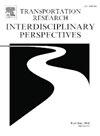On the relationship of speed limit and CO2 emissions in urban traffic
IF 3.8
Q2 TRANSPORTATION
Transportation Research Interdisciplinary Perspectives
Pub Date : 2025-07-01
DOI:10.1016/j.trip.2025.101513
引用次数: 0
Abstract
The paper analyzes the relationship between urban speed limits and vehicle emissions. There is an ongoing trend of reducing speed limits from to for the sake of increasing road safety. However, the impact of this policy on emissions is still unclear. It can be mixed depending on the proportion of dynamic and steady-state driving. While cruising emissions are higher at lower speeds, lower speeds entail less acceleration in urban traffic. Based on our investigation, one network topology feature (road length) and two traffic-related parameters (traffic volume and turning ratio) have been suggested for analysis being the most relevant to affect vehicle emission. Their correlation with potential emission reduction was evaluated using high-fidelity traffic simulation based on traffic scenarios validated with real traffic data. Random forest regression was used to support the optimal selection of zones for speed limit reduction. Traffic simulations on large urban networks prove that emission reductions of over 10% can be achieved in the case of a well-chosen speed limit policy.

城市交通限速与CO2排放关系研究
本文分析了城市限速与车辆排放的关系。为了提高道路安全,将速度限制从50公里/小时降低到30公里/小时是一个持续的趋势。然而,这一政策对二氧化碳排放的影响尚不清楚。可根据动态和稳态驱动的比例进行混合。而巡航排放较高,在较低的速度,较低的速度需要较少的加速在城市交通。基于我们的调查,我们提出了一个网络拓扑特征(道路长度)和两个交通相关参数(交通量和转弯率)是最相关的分析影响车辆排放。基于真实交通数据验证的交通场景,利用高保真交通模拟评估了它们与潜在减排的相关性。采用随机森林回归支持减速区域的最优选择。在大型城市网络上的交通模拟证明,在合理选择限速政策的情况下,二氧化碳排放量可以减少10%以上。
本文章由计算机程序翻译,如有差异,请以英文原文为准。
求助全文
约1分钟内获得全文
求助全文
来源期刊

Transportation Research Interdisciplinary Perspectives
Engineering-Automotive Engineering
CiteScore
12.90
自引率
0.00%
发文量
185
审稿时长
22 weeks
 求助内容:
求助内容: 应助结果提醒方式:
应助结果提醒方式:


